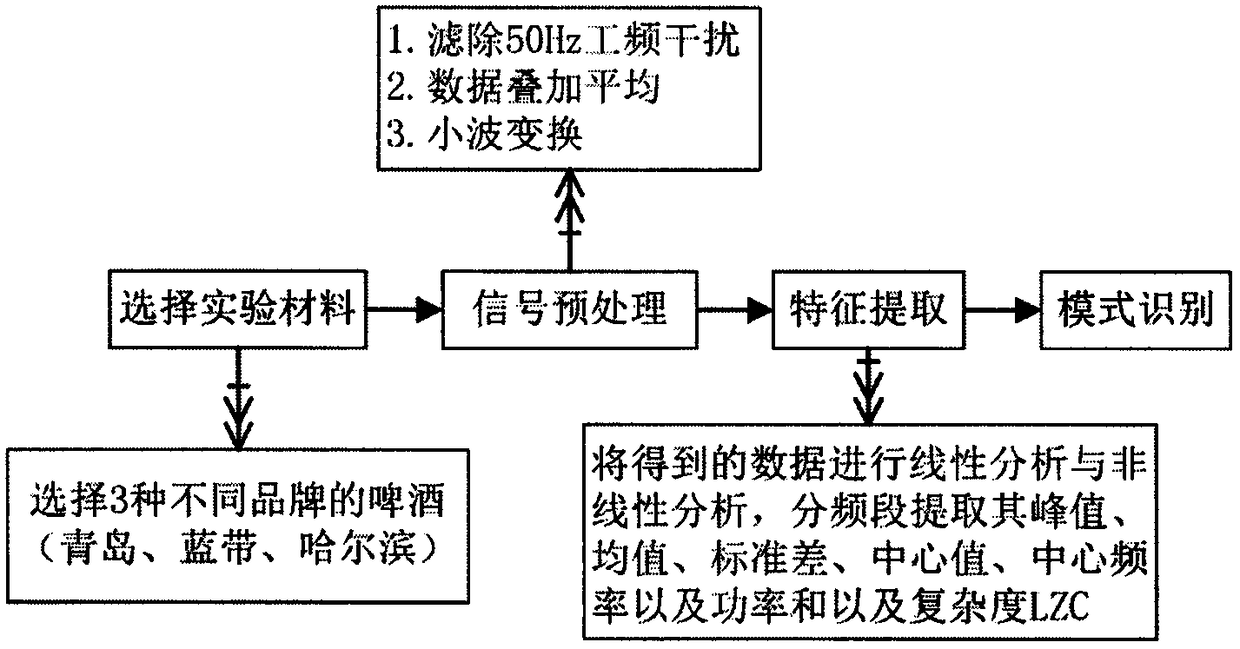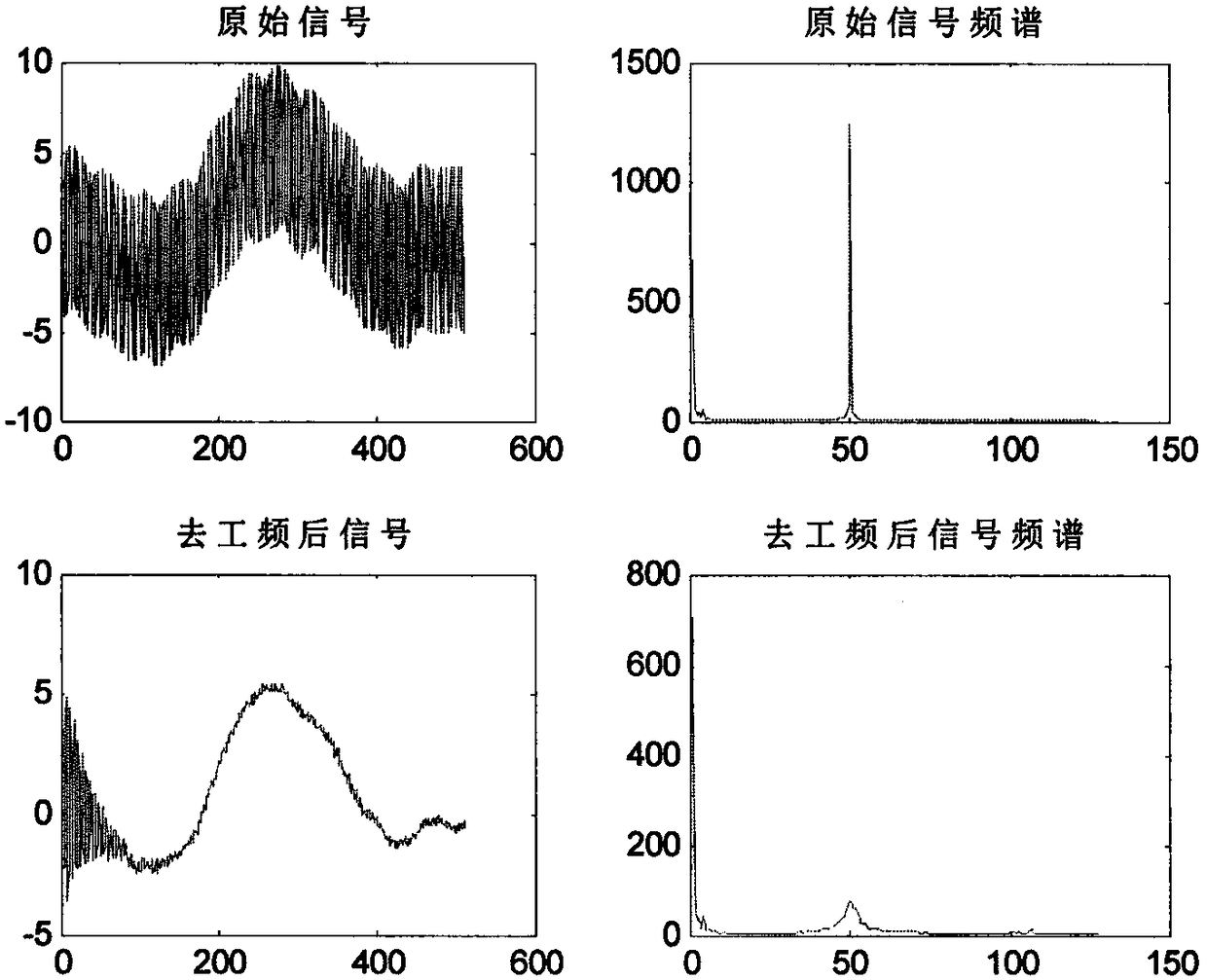Method for classifying sensory substances based on olfactory brain waves and GS-SVM
A GS-SVM and brain wave technology, applied in sensors, medical science, diagnostic recording/measurement, etc., can solve the problems of doping with subjective factors, poor repeatability, and inability to fully reflect the real feeling of the human body, and achieve a simple and simple sensory evaluation process. more normative effect
- Summary
- Abstract
- Description
- Claims
- Application Information
AI Technical Summary
Problems solved by technology
Method used
Image
Examples
Embodiment
[0022] Materials and methods: 3 different brands of beer (Tsingtao, Cordon Bleu, Harbin) were selected, and their alcohol concentrations and raw materials are shown in Table 1 below:
[0023] Table 1 Samples of 3 different brands of beer
[0024]
[0025] In terms of olfactory EEG signal analysis, the EEG signals used are self-collected data in the laboratory. After the original EEG signals are collected, EEG preprocessing is performed first (including deleting bad areas, filtering out 50Hz power frequency interference, and superimposing data. average, wavelet transform, etc.); then perform linear analysis and nonlinear analysis on it, and use the peak value, mean value, standard deviation, center value, center frequency, power sum, and LZC complexity obtained by sub-frequency bands as eigenvalues; considering the acquisition The electrodes contain different regions, so the electrode screening is carried out; finally, the selected feature values are sent to the correspond...
PUM
 Login to View More
Login to View More Abstract
Description
Claims
Application Information
 Login to View More
Login to View More - R&D
- Intellectual Property
- Life Sciences
- Materials
- Tech Scout
- Unparalleled Data Quality
- Higher Quality Content
- 60% Fewer Hallucinations
Browse by: Latest US Patents, China's latest patents, Technical Efficacy Thesaurus, Application Domain, Technology Topic, Popular Technical Reports.
© 2025 PatSnap. All rights reserved.Legal|Privacy policy|Modern Slavery Act Transparency Statement|Sitemap|About US| Contact US: help@patsnap.com



